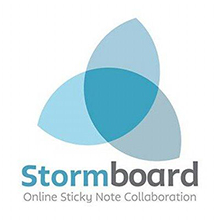Encourage Teamwork with Great Brainstorming Resources
Help students get organized and comfortable sharing their ideas.
- By Emily Major

- 09/27/16
Group projects can be difficult to coordinate and challenging to complete. But group work is also a great opportunity to practice communication and collaboration skills. Visual brainstorming tools, such as mind maps and virtual corkboards, can help students get organized and comfortable sharing their ideas.
These collaborative websites make it easy to participate in group brainstorming — kids can add text, video, and images anytime (remotely or during class). By organizing group work visually, students can develop valuable presentation skills while learning to work creatively as a part of a team.

MURAL
Price: Free to try; paid version starts at $49/year for 10 students.
Platforms: Website
Grades: 2 to 12
These mural boards are designed for multiple users to share ideas, allowing kids to work together on projects in class or remotely. Students can watch their boards grow as group members add text, video and images. In addition, students can move and revise text items during the brainstorming process as if they were moving Post-it notes around. The paid version allows teachers to create secure "rooms," or folders, to house mural boards and control sharing.

MindMeister
Price: Free to try; free version; $36/year paid version for teachers and $12/year per user for schools.
Platforms: Website
Grades: 5 to 12
Great for older kids and teachers, this mind-mapping website has a simple interface with extensive sharing functionality. Students can browse through premade templates or build their own map by choosing a main theme and building out child and sibling nodes with notes, images, attachments and links. Any node can contain team assignments, due dates and email reminders, so groups can easily visualize their interdependent responsibilities.

Stormboard
Price: Free to try; free pro version for teachers until December 31, 2016 (regularly $5/month per user). Platforms: Website
Grades: 5 to 12
Students create and add "stickies" to a virtual whiteboard where group members (or a whole class) can comment and vote. These "stickies" can be text, images or videos, and users can color-code and rearrange them on the board to easily organize ideas as they brainstorm. In addition to group projects, Stormboard is a great option for full classroom collaboration or individual brainstorming.
About the Author
Emily Major is project coordinator of education content for Common Sense Education.
Common Sense Education helps educators find the best edtech tools, learn best practices for teaching with tech, and equip students with the skills they need to use technology safely and responsibly. Go to Common Sense Education for free resources including full reviews of digital tools, ready-made lesson plans, videos, webinars, and more.